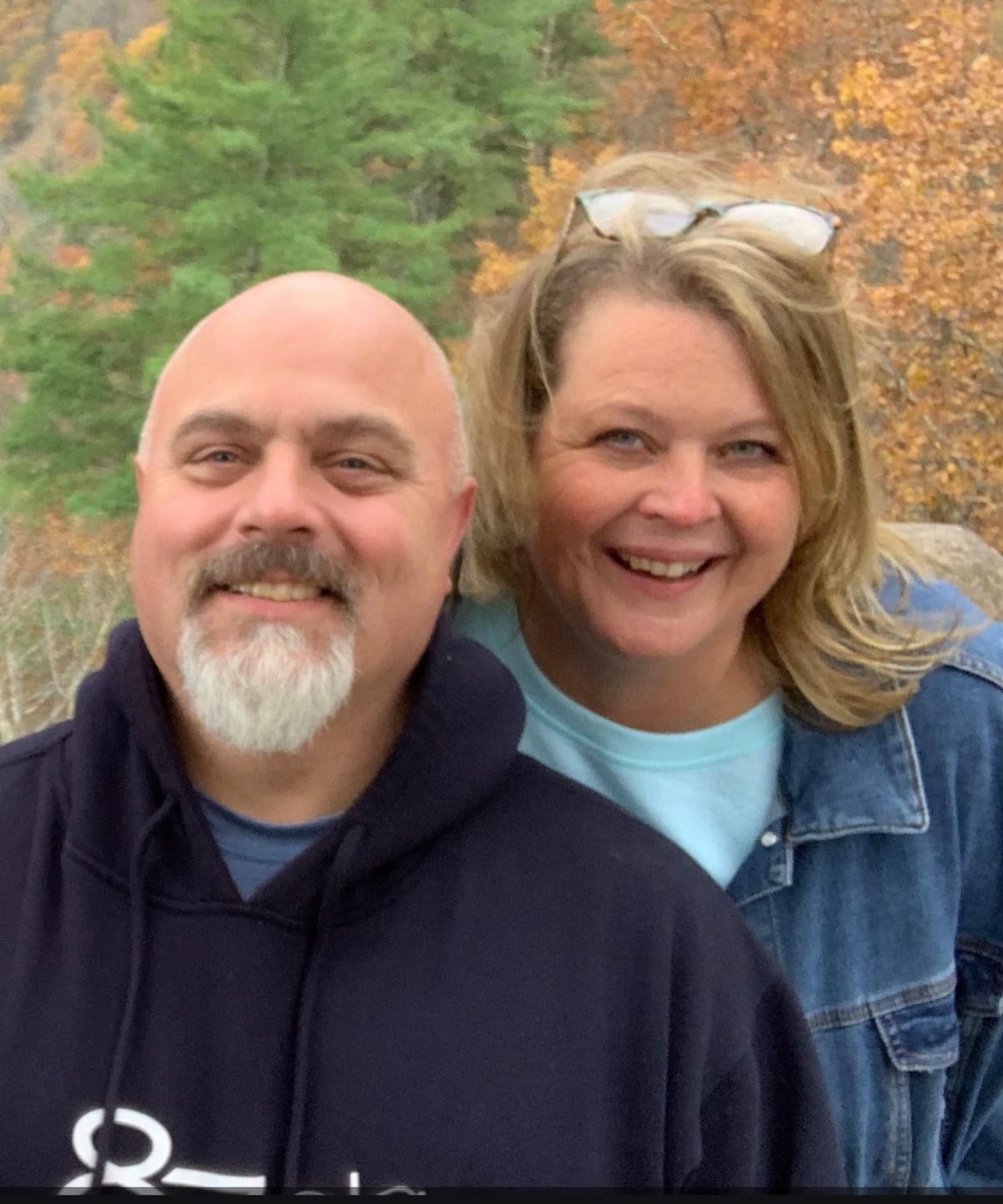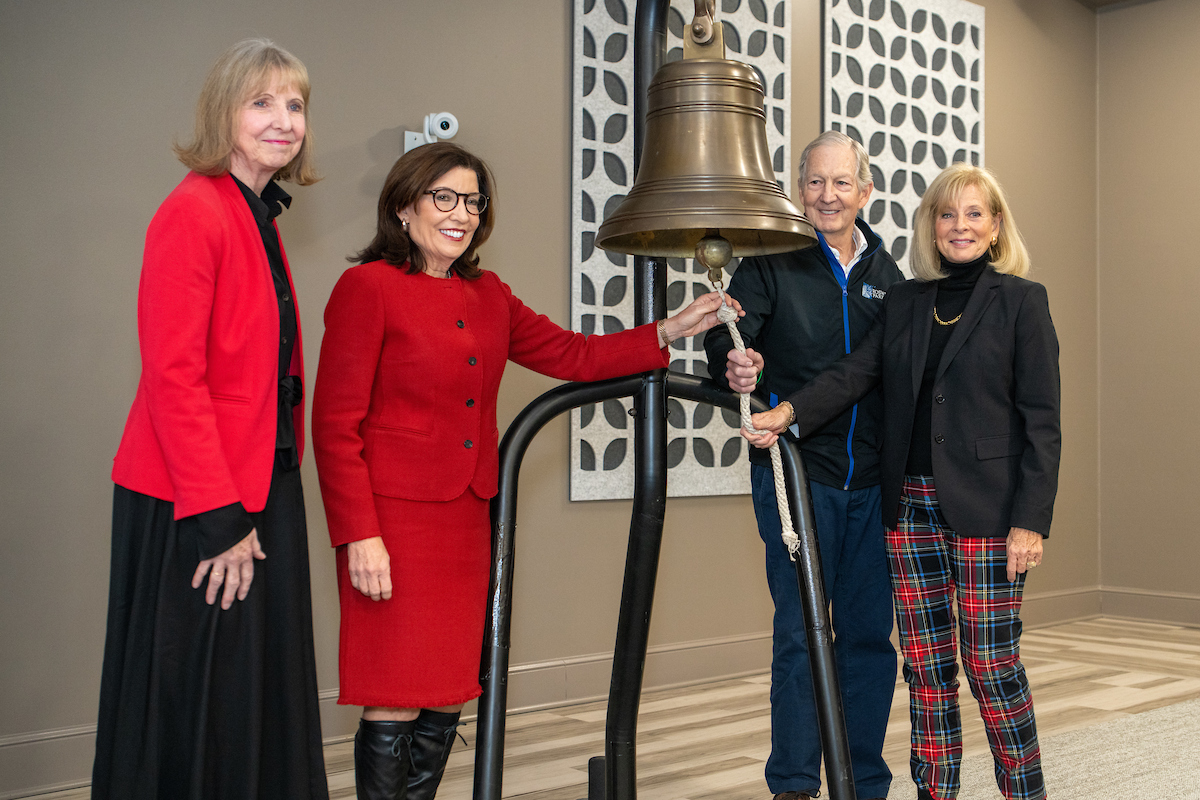By Joy Mazur, Epigraph intern
Her husband, Eric, had been having seizures for about 16 years, but no one had been able to provide a diagnosis. Guinard believed his seizures were triggered by stress and was often frustrated during hospital visits when Eric was put in a medical bed to relax. He had never had a seizure that could be monitored during these appointments.
Armed with a shopping bag full of delinquent bills, Guinard accompanied Eric to the epilepsy clinic. Once Eric’s EEG was set up, she insisted that the nurse move him from the medical bed to a chair so he could be more alert.
“Then I threw this bag of bills at him, and I started arguing with him on purpose to aggravate him,” she said. “They all thought that I was absolutely crazy.”
But Guinard believes the stress she induced worked its magic — the next morning, Eric had a seizure. There was no EEG correlate to his episode; he was diagnosed with functional seizures, also called psychogenic non-epileptic seizures (PNES).
Research shows care partners face mental, financial stress
Like people with epilepsy, people with functional seizures live with stigma, stress, and emotional and financial burdens — and so do their care partners.
Guinard has been caring for Eric since his seizures started more than 15 years ago. Their search for treatment has included years of MRIs, CT scans, EEGs, doctor’s appointments, overnight hospital stays, miles of travel, and even clinical attempts to induce seizures with shots of Tito’s. Answers finally seemed in sight when Eric had a seizure during the visit to Johns Hopkins — but there was no epileptic activity on his EEG.
“They did a full psych eval and told him he should go home and seek cognitive therapy,” said Guinard. “Which we did, and it never made a difference.”
A 2023 study found high levels of anxiety and depression in the care partners of people with functional seizures; 59% of care partners in the study showed symptoms of depression, anxiety, or both. A care partner’s depression levels are strongly correlated with those of the person they cared for, with specific demographic factors also playing a role.
A care partner’s responsibilities include scheduling and attending appointments, providing care after seizures, balancing care responsibilities with work, and sometimes just fighting to be heard. Care partners often are family members or spouses, which makes the experience emotionally draining.
People with functional seizures and their families also face significant financial stress. The 2023 study found that annual healthcare costs for people in the U.S. with functional seizures ranged from $110 to $920 million. A 2019 Danish study found that compared with families managing epilepsy, families dealing with functional seizures spent twice as much each year on direct and indirect costs associated with the condition.
The challenges of a care partner
Eric’s functional seizures started as blank stares and eventually progressed to full-body episodes. Guinard described the experience as exhausting and stressful.
“I’m not only worried about his health but also worried about our future,” she said.
To take care of their family, their finances, and Eric’s health, Guinard and her husband had to get creative. Guinard went back to school to become a social worker. After seizures prevented Eric from other work and from driving, he found his current job as a mechanic for Polaris, which has a shop not far from home. Finances are still a challenge because Eric hasn’t been able to obtain disability benefits.
Stigmatization in the clinic is an additional barrier, Guinard said. Some medical and mental health professionals, including Eric’s psychiatrist, have told him they don’t believe that functional seizures exist. Others are aware of the condition but can’t seem to help them.
Functional seizures account for more than 10% of seizure emergencies and around 30% of visits to epilepsy monitoring units, but diagnosis is often missed or delayed.
“It’s frustrating because no one that we have ever seen has had expertise in this field,” Guinard said. “I think it’s just as frustrating for them as it is for us because they’re not familiar and they don’t know enough about it.”
Care partners and the treatment pathway
Guinard isn’t alone in her dissatisfaction with the system.
Amanda Hopper, executive director of FND Hope U.S., has been navigating the care system for functional seizures for about four years.
When her child, Mollie, was diagnosed with functional seizures at age 14, Hopper said the family was given no context or information about the condition. They were given the diagnosis and urged to seek psychotherapy without much more explanation.
Finding adequate treatment was one of the most difficult challenges of the journey, Hopper said. Many options did not address or accept both the psychological and physical aspects of functional seizures. Because of a lack of resources, Mollie became increasingly discouraged and depressed.
“As the care partner, it was so frustrating and maddening to have your child be dealing with an illness that there was no support for,” Hopper said.
Lack of resources and gaps between treatment and diagnosis are common. In the United States, most epilepsy centers do not provide treatment for functional seizures. In many other countries, no form of treatment is accessible.
Lorna Myers, a psychologist who specializes in functional seizures, said that physicians need more education on psychological illnesses.
“Anything psychological is treated as different and less than,” she said. “That is just unacceptable.”
Myers believes people with functional seizures need to be given more information and guidance beyond the diagnosis. When physicians don’t offer any further treatment, she said, the burden then falls on the care partner to educate themselves, make calls, and find accommodating programs.
To address this burden on families, Myers wrote a book for people with functional seizures and their loved ones. She also manages a blog about the condition and has another book, written for physicians, coming out soon.
Physician care for care partners
After many unsuccessful attempts, Hopper found a program that worked for Mollie, who now has more skills to manage her seizures. Mollie recently graduated high school; a feat that once seemed unlikely.
But the journey hasn’t been easy, and Hopper said care pathways and treatment pathways still have a long way to go.
“As a caregiver, I feel very isolated, very alone and very helpless,” she said.
Hopper believes finding other people to talk to about the diagnosis is essential. For her, FND Hope — which advocates for people with functional neurological disorder (FND), an umbrella diagnosis that includes functional seizures — provided a community of support, resources, and education.
Benjamin Tolchin, associate professor of Neurology at Yale School of Medicine, said he has referred care partners of people with functional seizures to general support groups, but that more specialized groups could be beneficial because of the specific challenges these care partners face throughout treatment.
“There’s this sort of balance between being a cheerleader and wanting to provide emotional support and logistical support,” Tolchin said. “But ultimately, it’s up to the patient to take that step and engage in the treatment.”
Physicians should communicate not only with the person with seizures but also with their family and the rest of their treatment team, Tolchin said. Clinicians should affirm that the seizures are real, explain the diagnosis clearly and empathetically, and have a direct conversation with the healthcare professional who is providing further treatment.
Physicians also can urge care partners to seek treatment for themselves and could go as far as screening them for depression and anxiety during appointments, said Tolchin.
Guinard sought help for herself and now takes medication for anxiety.
“It’s definitely very stressful,” she said. “A lot of worry, in more than one way. It’s so hard to get people to hear you and listen to you.”
##
Founded in 1909, the International League Against Epilepsy (ILAE) is a global organization with more than 125 national chapters.
Through promoting research, education and training to improve the diagnosis, treatment and prevention of the disease, ILAE is working toward a world where no person’s life is limited by epilepsy.
Website | Facebook | Instagram | YouTube
Twitter: English French Japanese Portuguese Spanish




